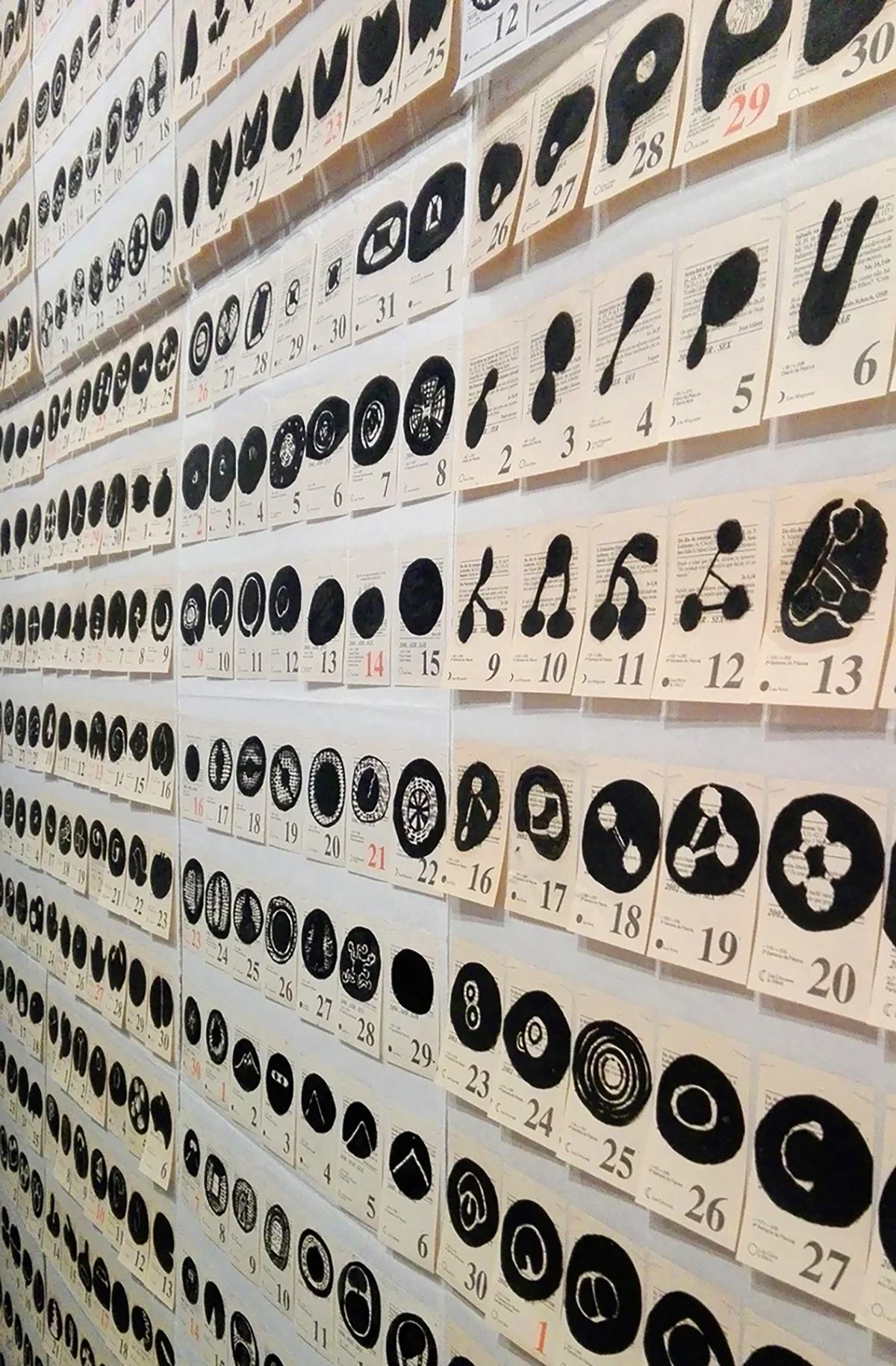“Calendrier” acquired by the Staatsgalerie Stuttgart
My installation Calendrier (2000–2025) has been acquired for the collection of the Staatsgalerie Stuttgart. I am deeply honored that this work—created over more than two decades—has found its place in such an important museum. Cristina Barroso’s artistic practice is shaped by an intense intercultural dialogue. Born in São Paulo in 1958, she has lived and worked in Stuttgart since moving there in the 1990s, where she is based in the Reitzenstein studios. In her work, Barroso connects Brazilian and European cultural and formal traditions, from which she develops a distinct and highly personal visual language. At the heart of her practice are themes such as time and place, memory, and identity—universal questions that she continually re-examines through conceptually oriented, cross-media works. The paper installation “Calendrier“—French for “calendar”—was created over the course of more than two decades, between 2000 and 2025. It exemplifies Barroso’s conceptual approach and her sensitive handling of materials. Conceived as a large-scale wall installation, the work explores the perception and structuring of time in a multilayered way. While a calendar’s original function offers an objective, linear order of days and months, Barroso deliberately deconstructs this principle: she dissolves the chronological sequence of the pages, reorders them subjectively, and thereby questions fundamental conventions of timekeeping. The artist intervened on each calendar page with an individual oil drawing—symbols, abstract signs, or studies of nature. In their serial arrangement, these elements create a poetic, personalized structure of time. The interplay of repetition and singularity generates both visual and conceptual tension: between order and fragment, seriality and individuality. Notably, “Calendrier” was created in part during a formative period in the artist’s life, including her pregnancy, which subtly resonates in the work. As such, it represents not only an exploration of the structure of time, but also a reflection on the relationship between personal experience and collective temporal perception.
Prof. Dr. Christiane Lange director of Staatsgalerie Stuttgart
Museum Conservator and Chief Curator Susanne Kaufmann-Valet, Staatsgalerie Stuttgart


